Fabrication & Assembly Process¶
Prototypes¶
My prototypes are biomaterial sheets inspired by early small product samples made. These are bioplastics colored with plants from the rainforest and bioleathers made from flowers (flower leather is fleather) and sawndust. Next you can find the different biomaterial sheets made.
BIOSHEET PROTOTYPES¶
Now this is the part I enjoyed the most!
I made so much different formulas and had to chose what to use and what could stay for future projects post Fabricademy. I really love this!
I'm sharing the formulas of leather made from Forest flowers:
-
Heliconia (Palulu) Leather
-
Costus Scaber/ Spiral Ginger /Sangrafu Leather
Now here is where I got a little carried away:
Pepper leather! Two hot spicy peppers both originating from the Amazon region according to different online sources.
- Red Habanero and
- Yellow Madam Jeanette pepper leather.
My skin itched like crazy for 2 days after processing but it was all worth it! (See my red hot wallet)
Here is a short video showing different colors and how texture changes during the mixing and processing of different ingredients for the biomaterials.
Roeren by Reina Raveles
Bioplastics:

All the starch based plastics I have made where from Tapioca. Tapioca or Cassava is the most important staple food to people living in the forest.
Biochromes made to color the sheets:
-
Butterfly pea blue
-
Annato Koesoewe orange
-
Rubber tree sawdust red
TAPIOCA (Cassava) BIOPLASTIC RECIPES¶
Recipe Source: Fabricademy tutorial Tapioca & Fruit leather recipe
TAPIOCA BASE RECIPE¶
250 ml water 25 g tapioca / manioc / cassava starch 10 ml glycerine 10 ml vinegar
Blue Color variation made with biochromes:¶
Butterfly Pea/ Clitoria ternatea Flower FINAL PROJECT: Biosheet used in Okopipi Blue Purse Sheet Size: 29 by 34 cm FINAL PROJECT: Biosheet used in Okopipi Blue Purse Note: very intense color and color stays stable when dry

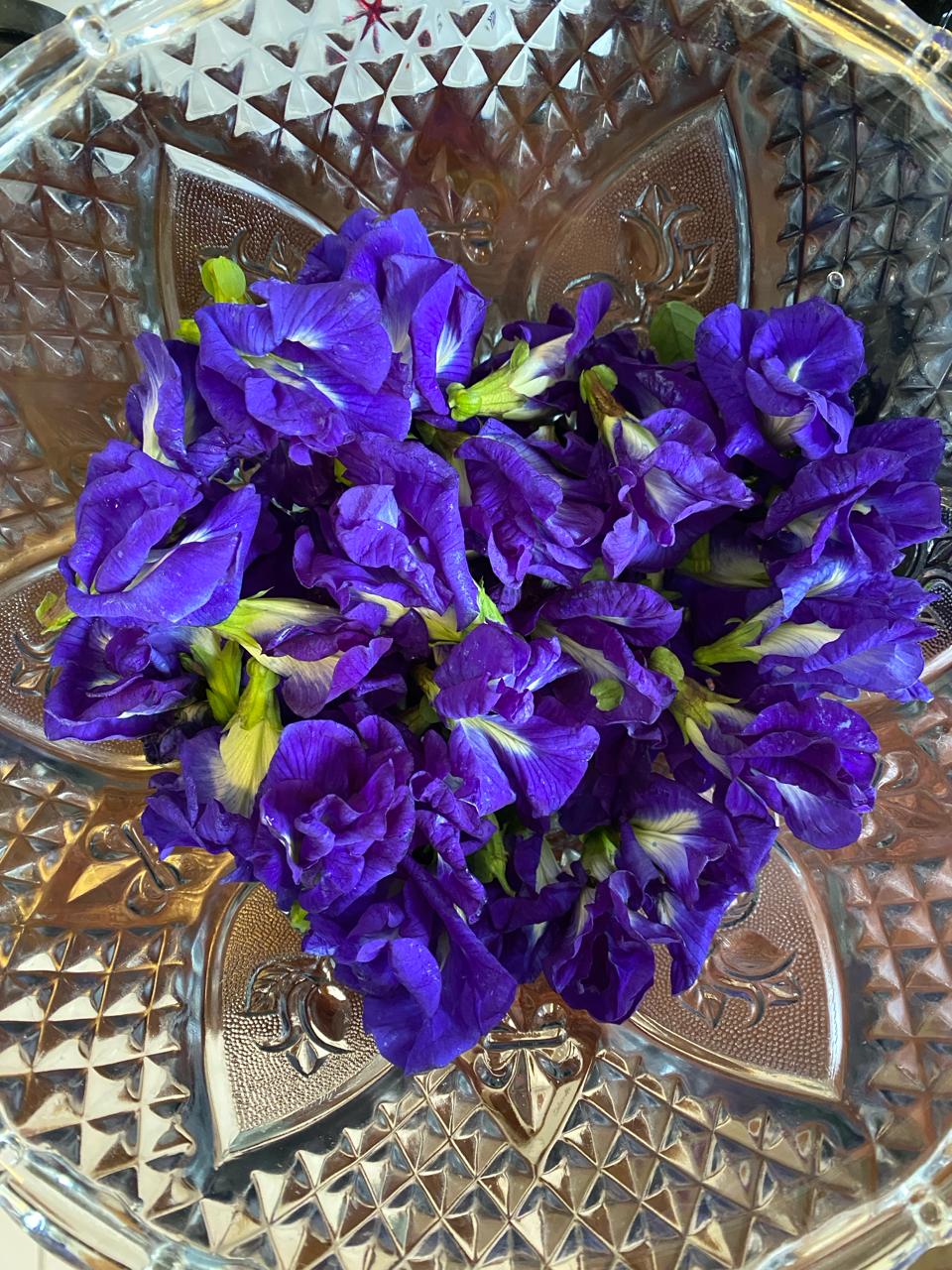
Purple to Pink Color variation made with biochromes:¶
Gado Libi/Purple Heart/ Trandescantia Pallida Leave and stem Sheet Size: 29 by 34 cm FINAL PROJECT: Biosheets not used in final project
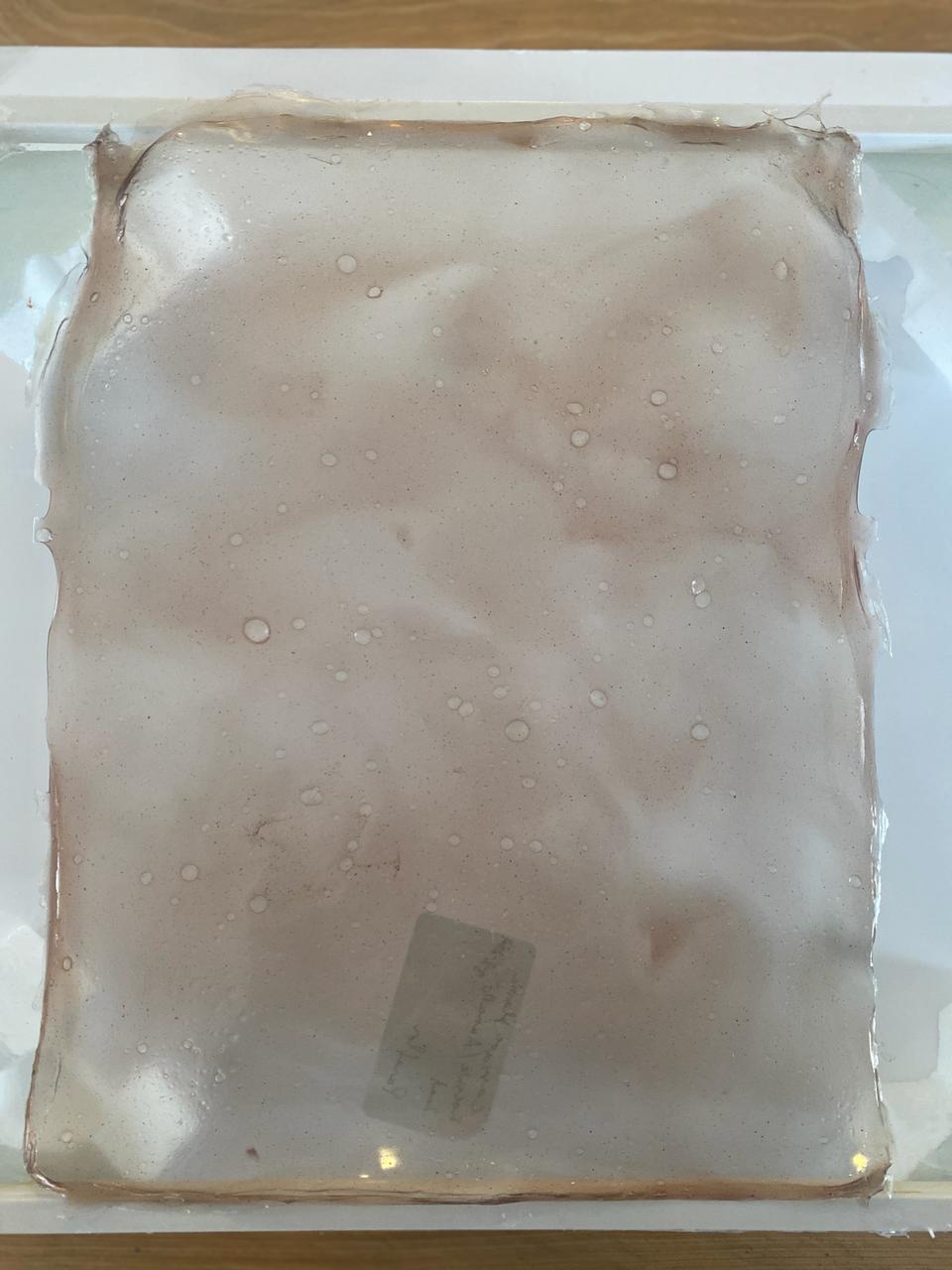

Pink Color variation made with biochromes:¶
Sangrafu/ Costus Scaber/ Spiral Ginger Flower Sheet Size: 48 by 27 cm Shrinkage to: 28 by 18 cm FINAL PROJECT: Biosheets not used in final project Lasercut tests done on dry material

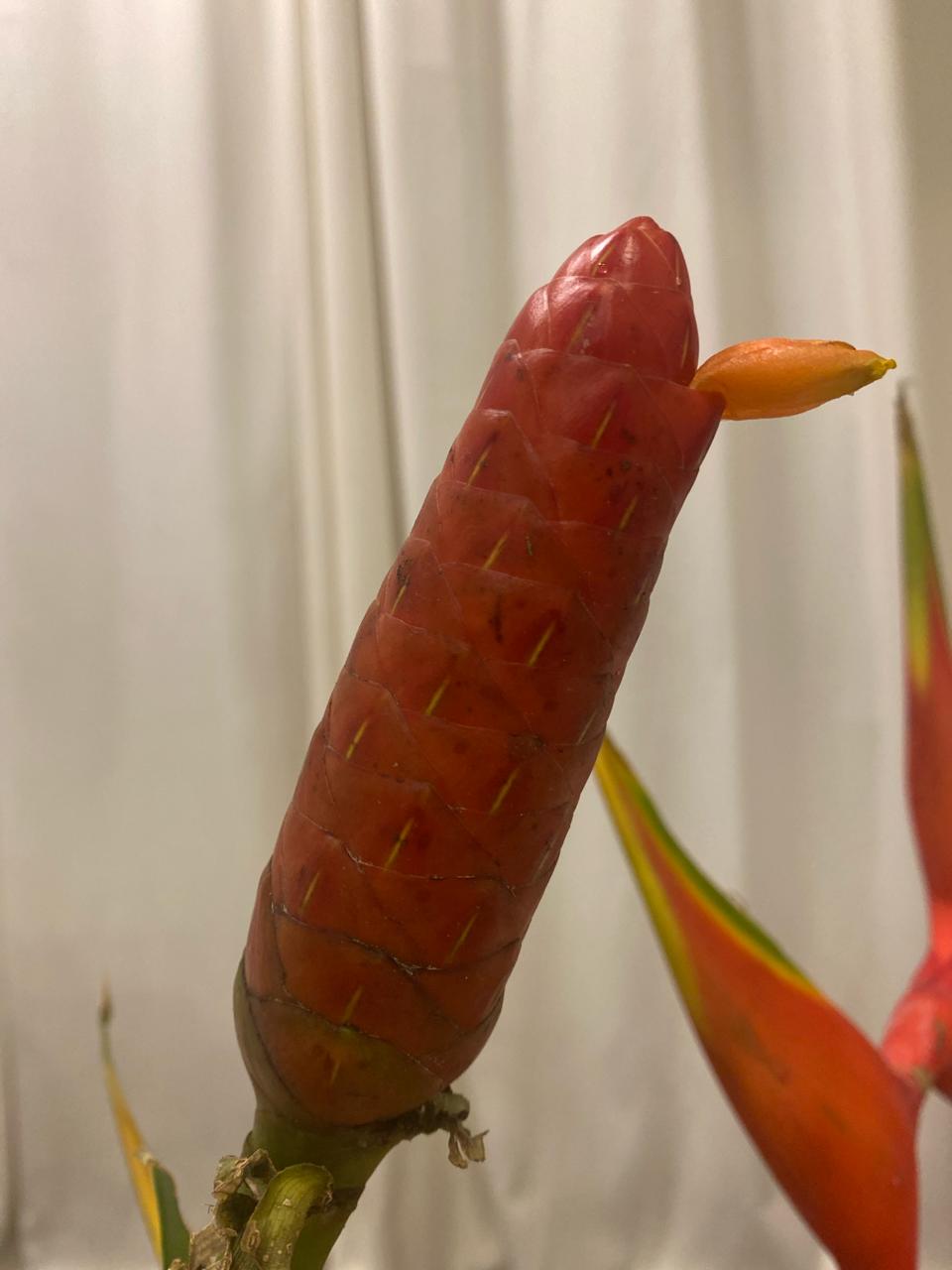
Yellow to Golden brown Color variation made with biochromes:¶
Slabriki wiri/ Senna Alata Flower Sheet Size: 48 by 27 cm FINAL PROJECT: to gloss the bioleather fibers used in the Bereis tree frog clutch (light)

Sheet Size: 27 by 35 cm FINAL PROJECT: 2nd Biosheets not used in final project (dark)
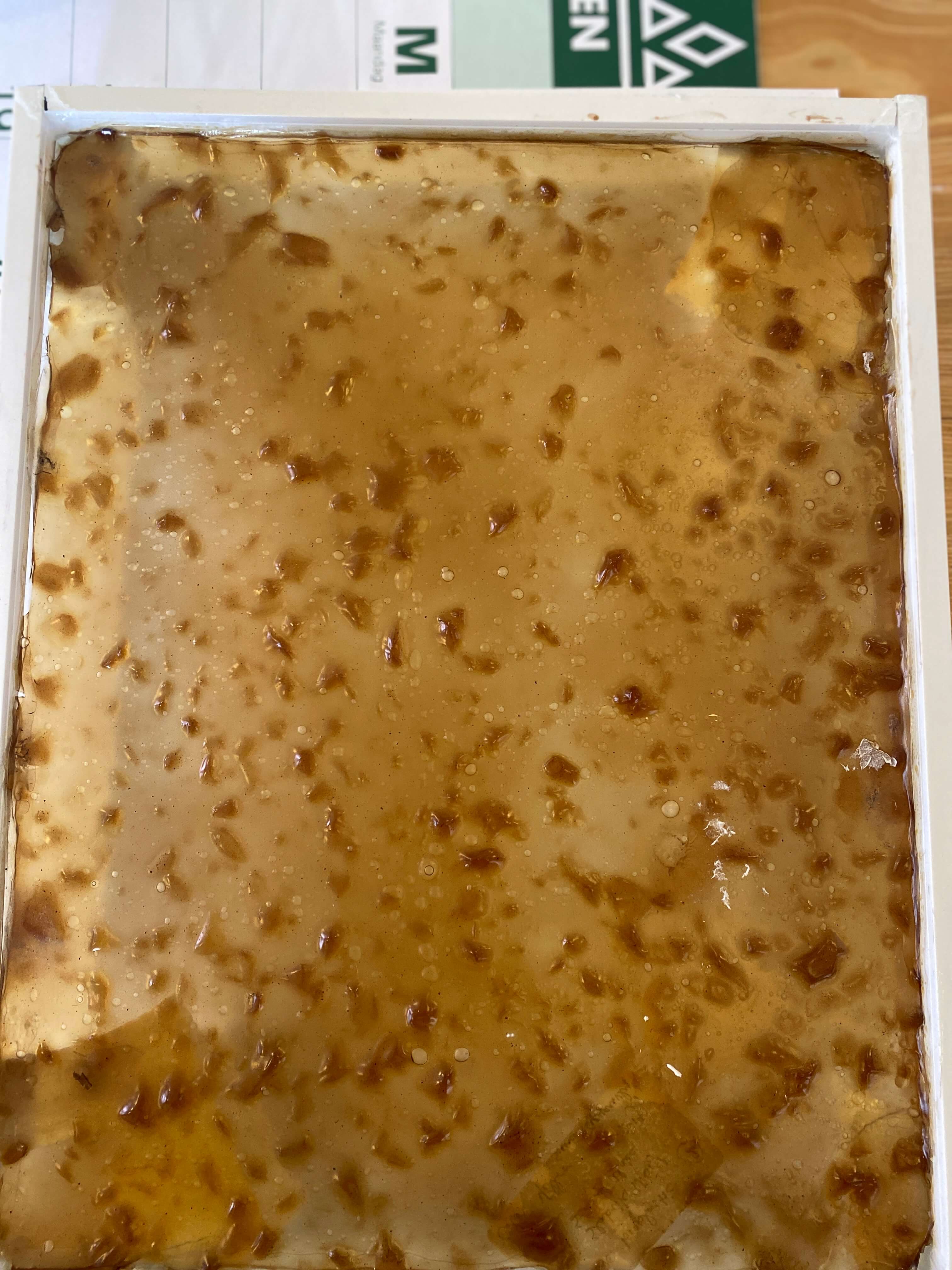
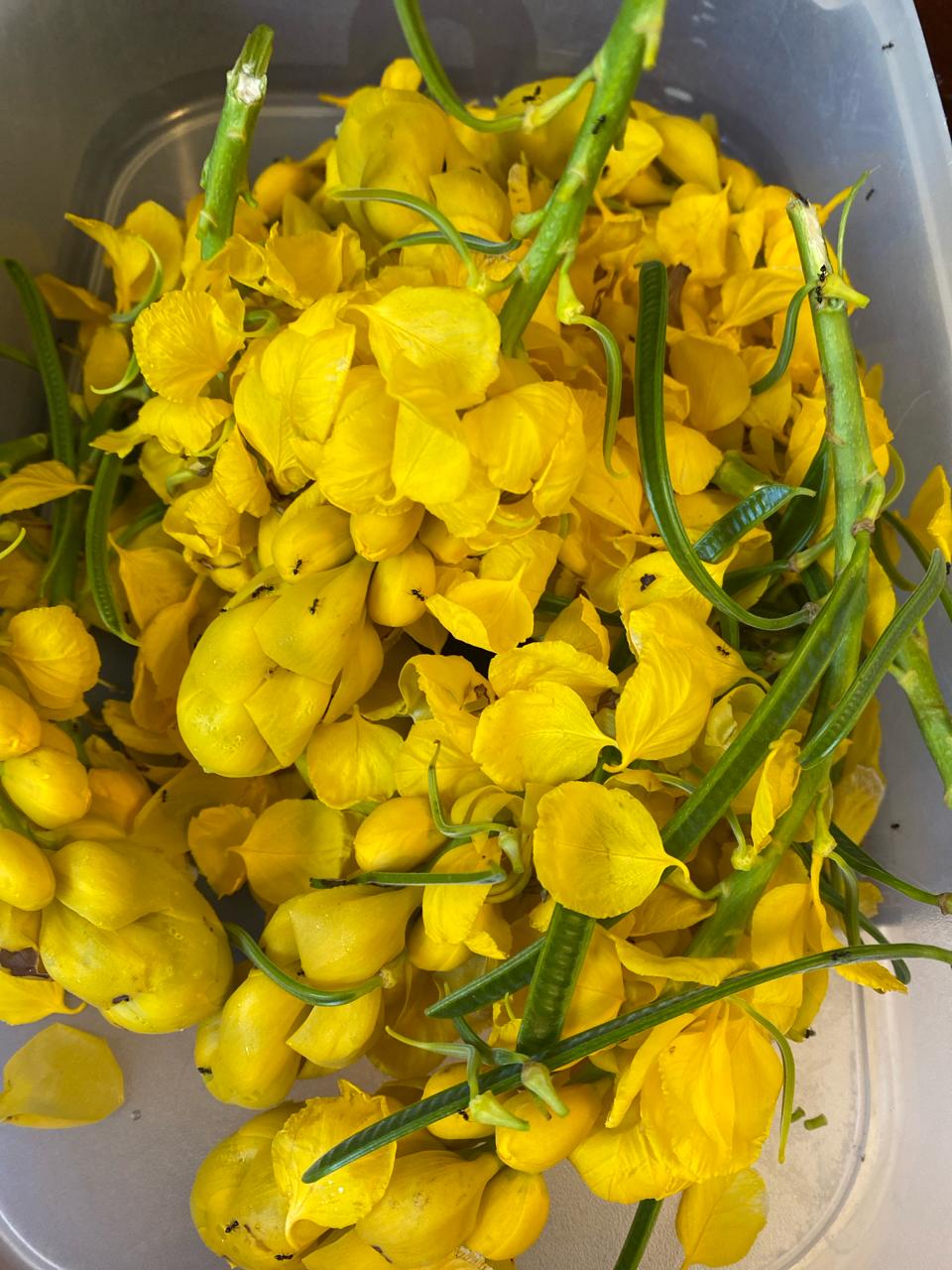
Click on the picture link to see how to remove the dried bioplastic from the glassmold. Here I remove the Yellow Senna Allata (Slabriki) Bio PLastic.
Light pink Color variation made with biochromes:¶
Pink Torch Ginger Sheet Size: 27 by 34 cm FINAL PROJECT: Biosheets not used in final project
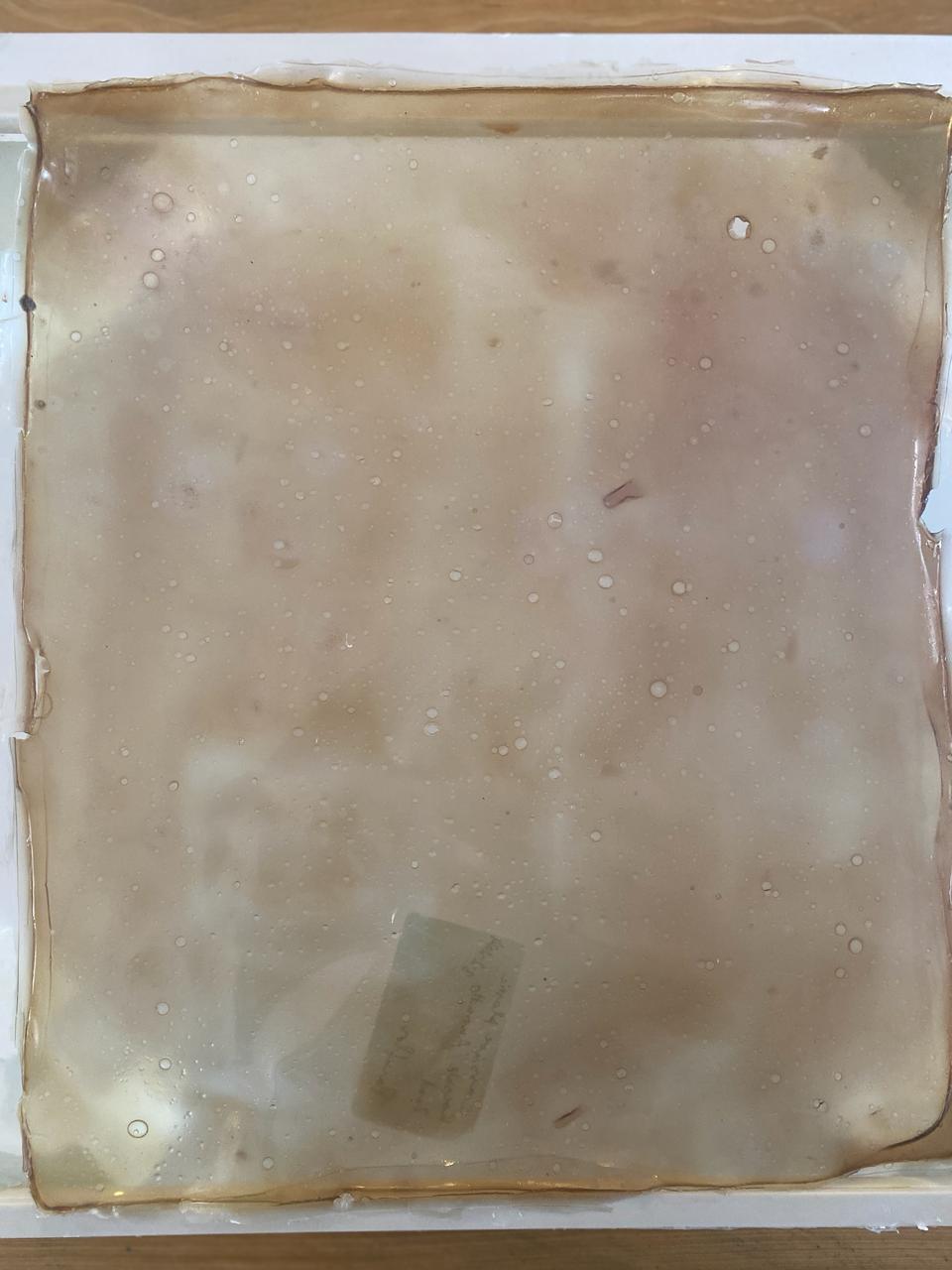
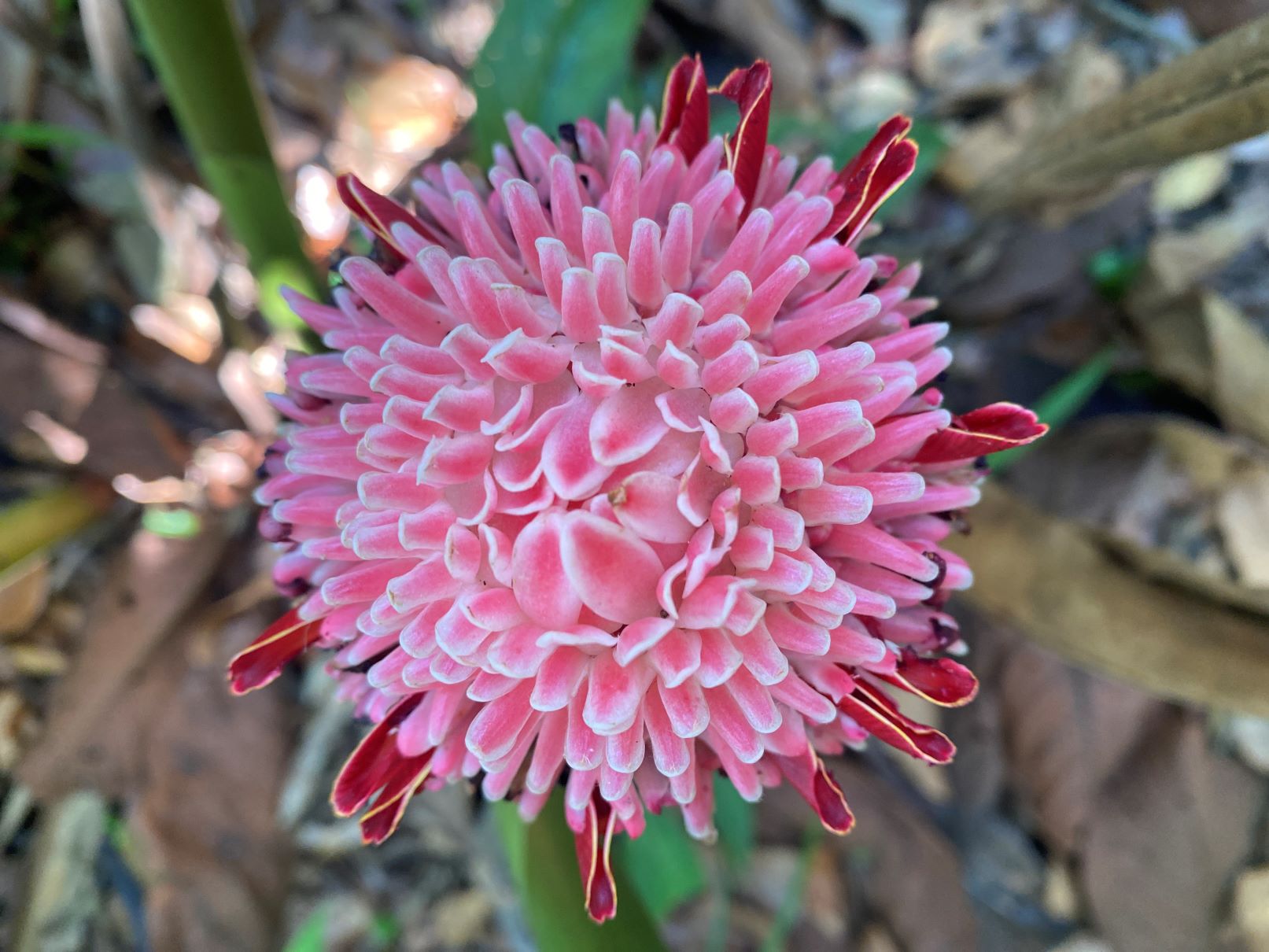
Orange Color variation made with biochromes:¶
Koeswe/Annatto/Bixa Orellana Fresh Seeds Sheet Size: 32 by 32 cm Shrinkage to: 30,5 by 30 cm FINAL PROJECT: Biosheet lasercut but not used in final project Note: very intense color and color stays stable when dry

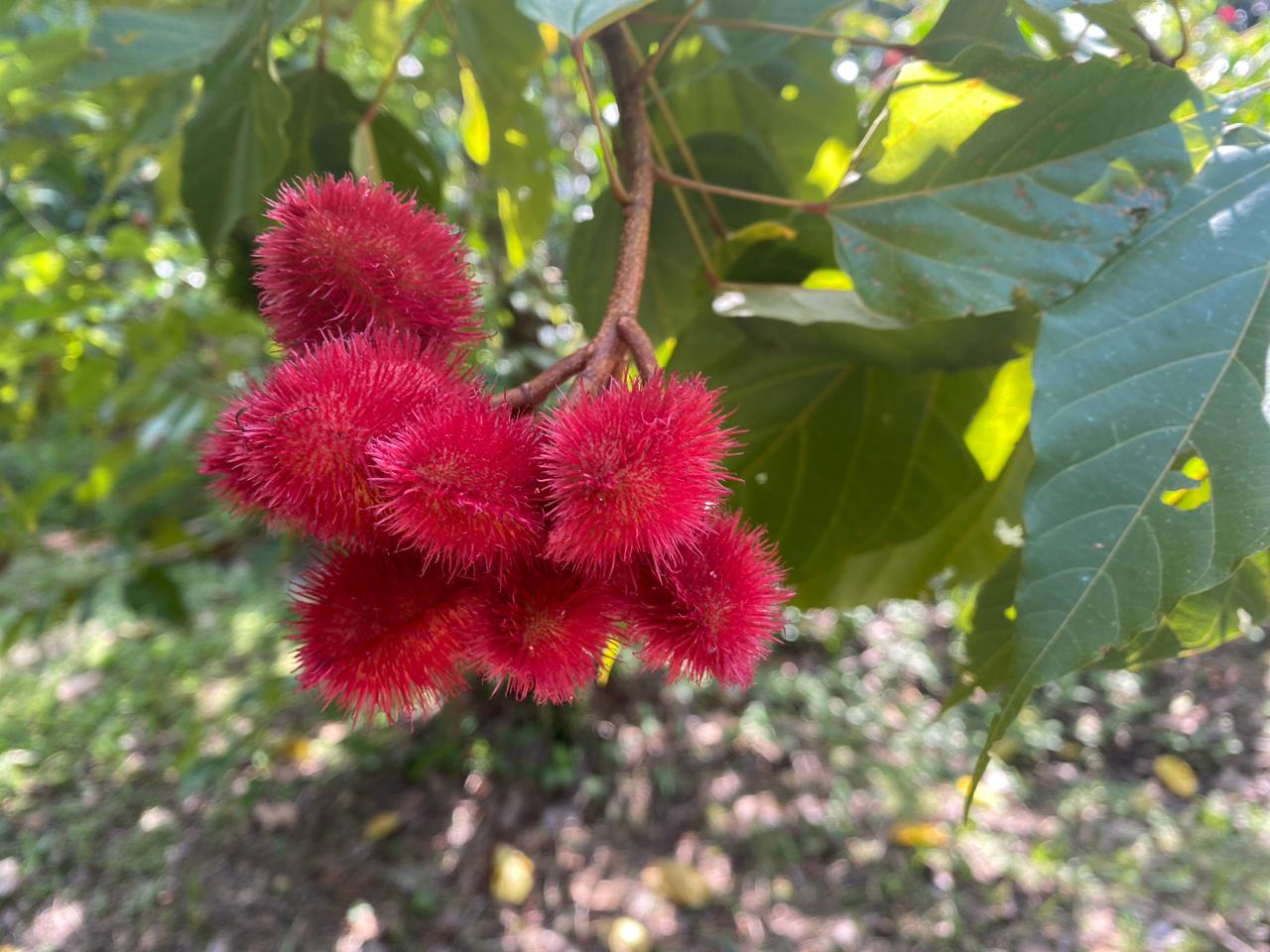
Click on the picture link to see how to remove the dried bioplastic from the glassmold. Here I remove the orange Annatto Koeswe

Brown Color variation made with biochromes:¶
Seketi/Joro Joro/ Oleander flower/ Cascabela Thevetia Sheet Size: 27 by 35 cm FINAL PROJECT: Biosheets not used in final project Note: poisonous species
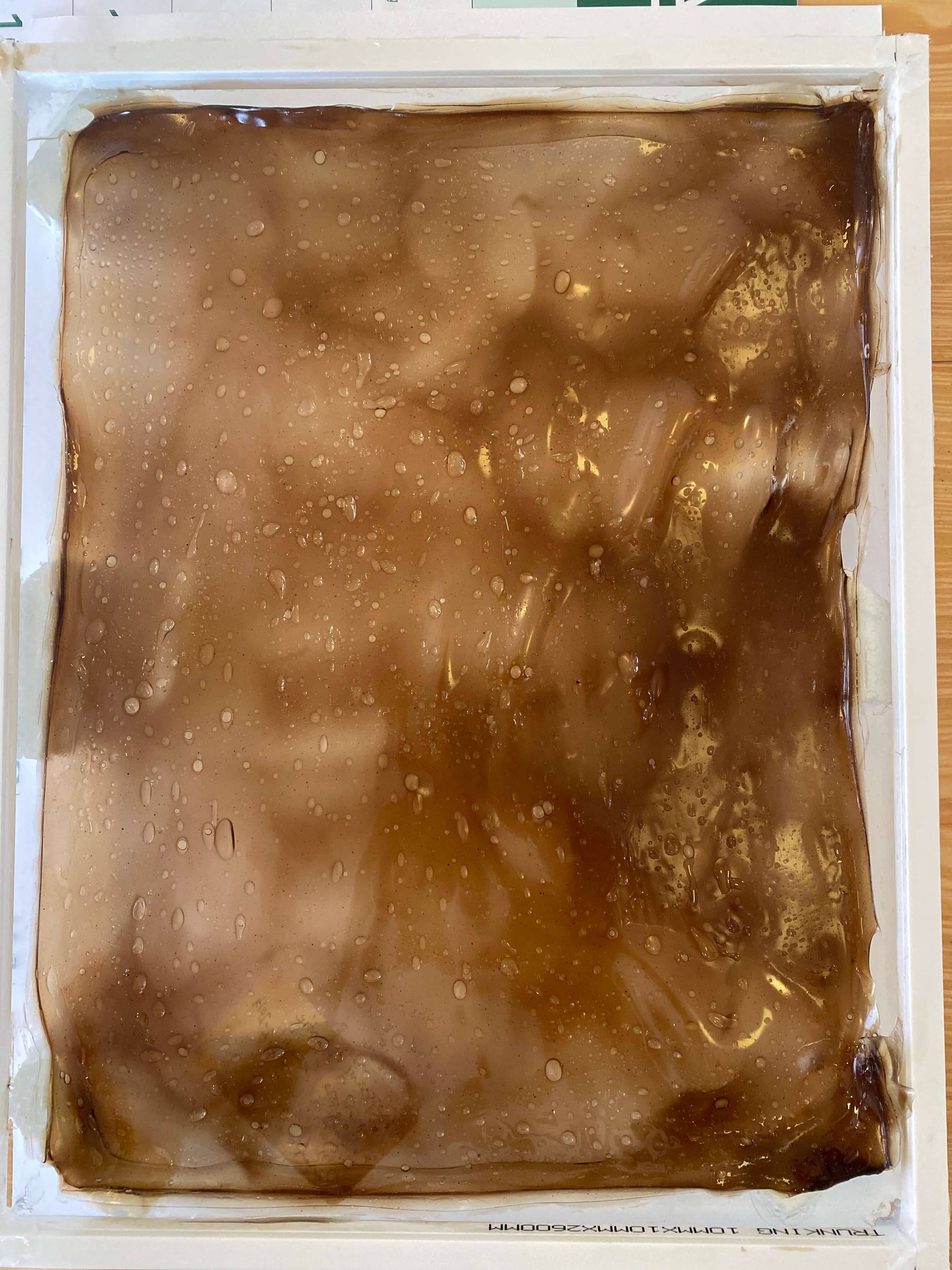
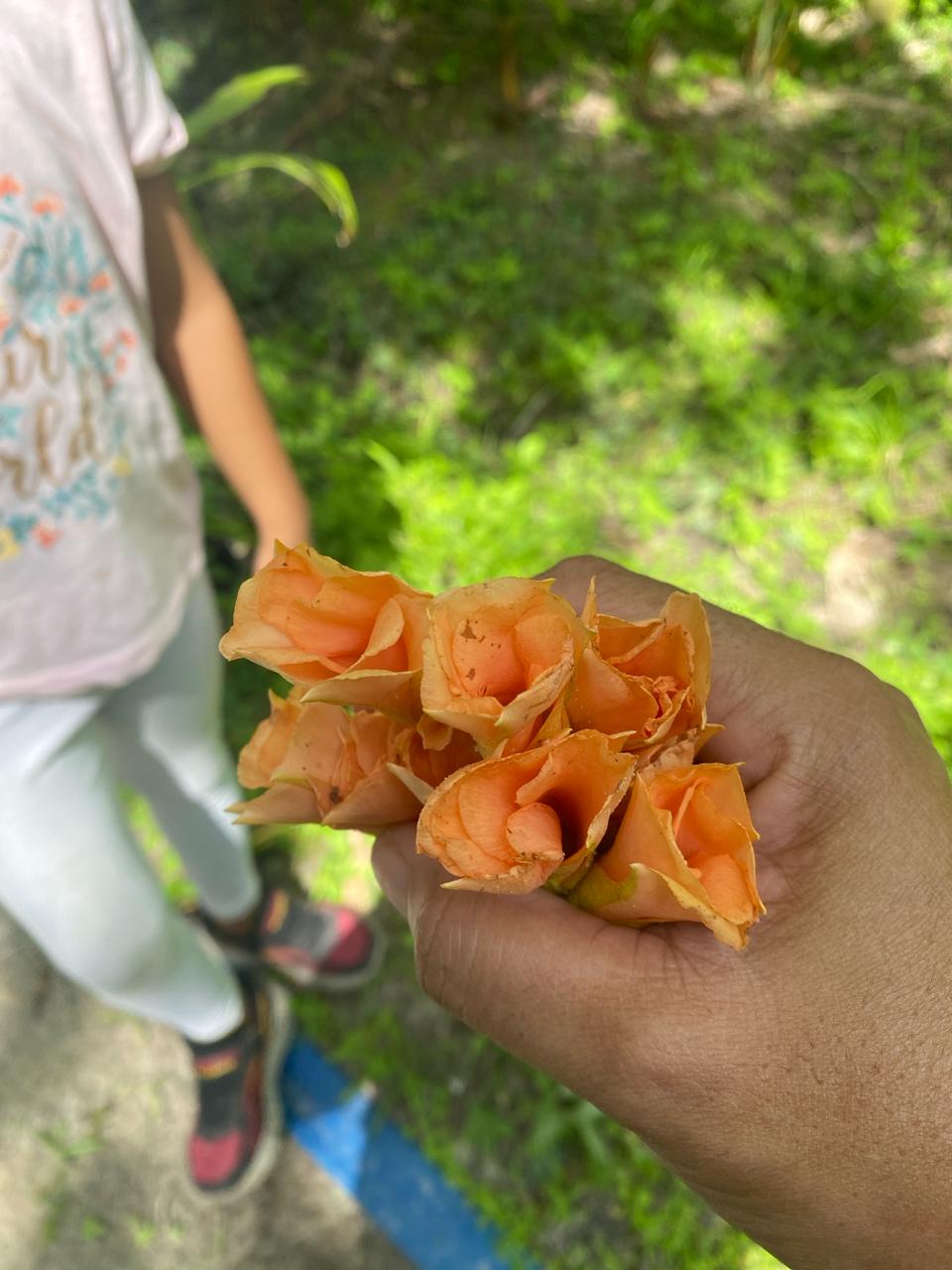
BIO LEATHER RECIPES¶
RECIPE Cellulose Leather - Rubbertree/ Bolletrie Sawndust Leather¶
Scientific name: Mimusops balata of Manilkara bidentata * Water 600 ml water * filler 50 g pulp/ sawn dust * polymer 30 g agar * plastifier 20 g beeswax * plastifier 35 ml glycerine * polymer 25 g tapioca starch * emulsifier 25 ml vinegar * Other Clove * Other cinnamon FINAL PROJECT: Biosheets not used in final project
Background information on the Bolletrie / Balata Rubbertree: Bolletrie rubbertree
Recipe Source: Aalto The CHEMARTS Cookbook
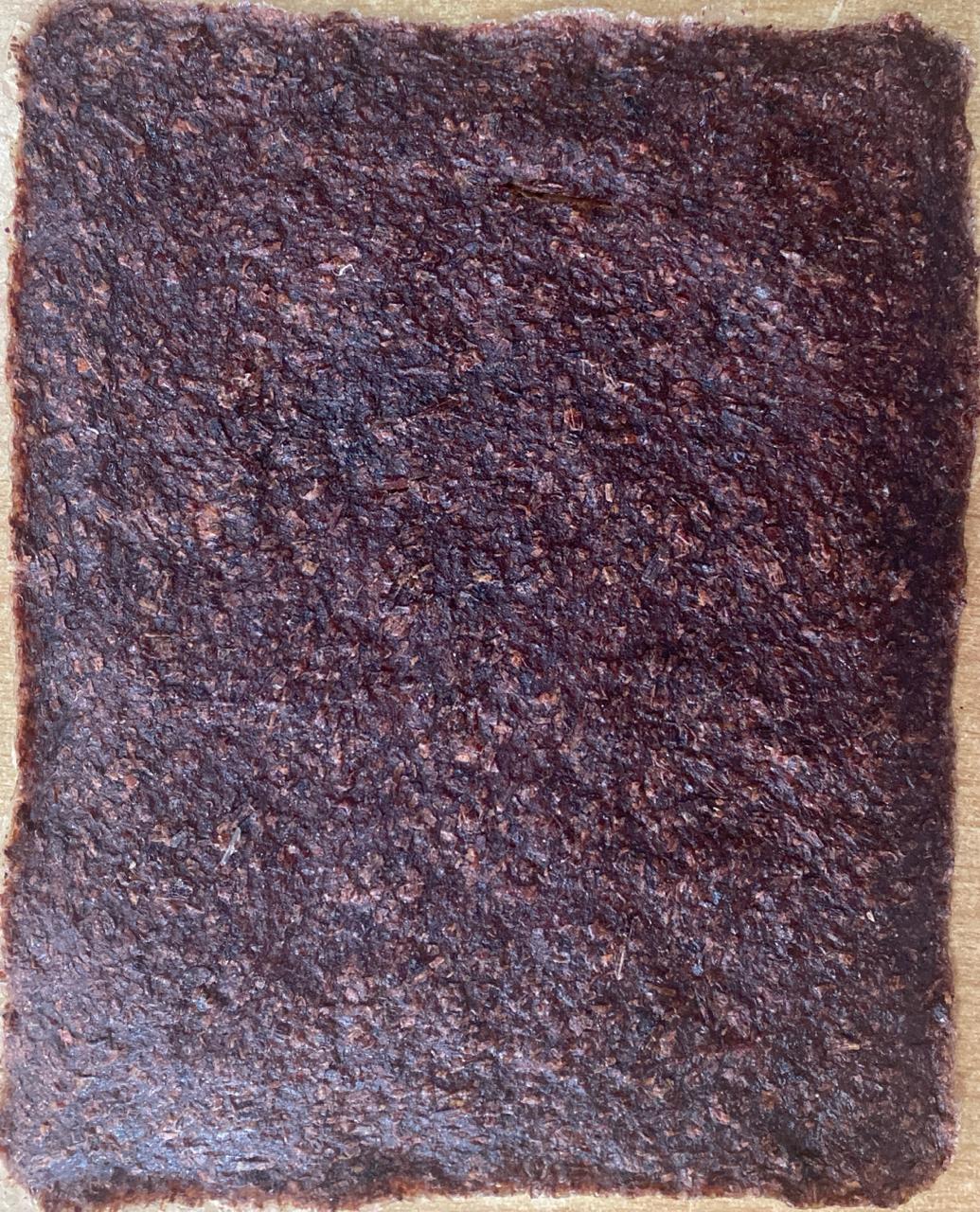
TAPIOCA (Cassava) BIO LEATHER RECIPES¶
Recipe Source: Fabricademy tutorial Tapioca & Fruit leather recipe
MANGO BIOLEATHER & TAPIOCA¶
- 2 un overripe mangoes (about 300-400 g)
- 25 g tapioca / manioc / cassava starch
- 20 g vinegar
- 5 g salt
Optional * pinches of cinnamon or curry to avoid molding * 10-20g beeswax
Sangrafu/ Costus Scaber/ Spiral Ginger Flower Tapioca Leather recipe¶
450 g flower residu 50 g tapioca / manioc / cassava starch 40 g vinegar 10 g salt pinches of cinnamon to avoid molding 40g beeswax

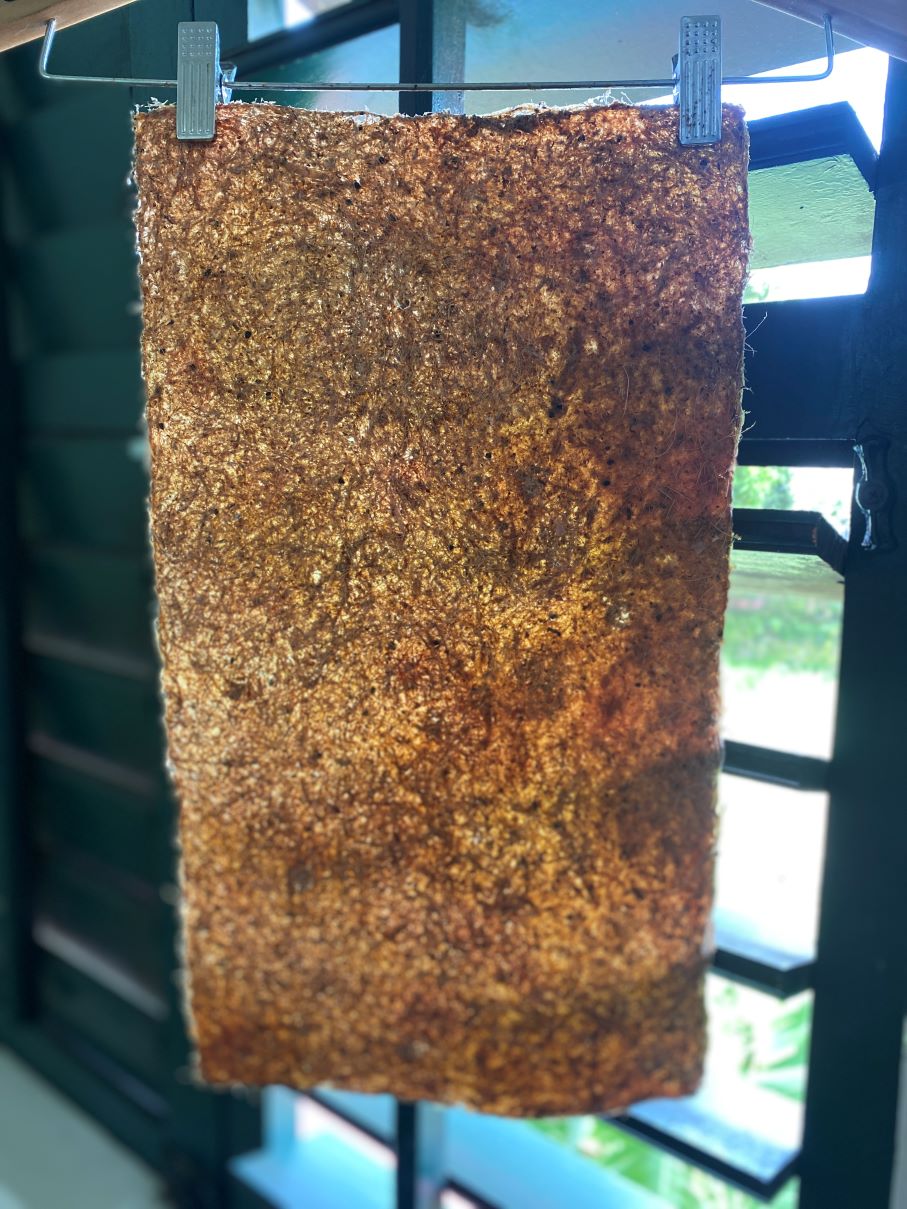
After cooking the recipe, I did not bake the mix in the oven, since I do not have an oven on location with these measurements. Instead I poured the mix on a glass mold of size: 48 by 27 cm I left it to dry in the attic which has proven to be a pretty good drying chamber with outside temperatures being 30 degrees. I have not measured the temperature in the attic, that is an experiment on its own (temperature and humidity) but some papers suggest the temperatures to be anywhere between 50 and 80 degrees celcius during the day.
Outcome: The first result of the leather was a bit rough more like a fiber mat. In addition there was fungal growth by day 3. I was ables to stop it by spraying 90% alcohol and wiping it off. Feedback from one of my mentors Cecilia was to use the pressure cooker to kill as much microbes as possible, which I did in later versions. In addition I realize that a drying oven is key so this will be a future investment.
Click on the picture links to see how to remove the dried Spiral Ginger Leather from the glassmold.
Later processing: After doing a lasercutting test on a small sample of the same material, to find out which settings, I lasercut the material to fabricate a clutch.
Since I wanted the clutch to resemble a patent leather clutch I had to make the material shiny. To gloss it I made a new batch of tapioca bioplastic very lightly colored with yellow Senna Alata flowers. I poured the mix on a glass mold and then layered the cut leather form in the bioplastic mix. I then left it to dry for approximately 1 week.
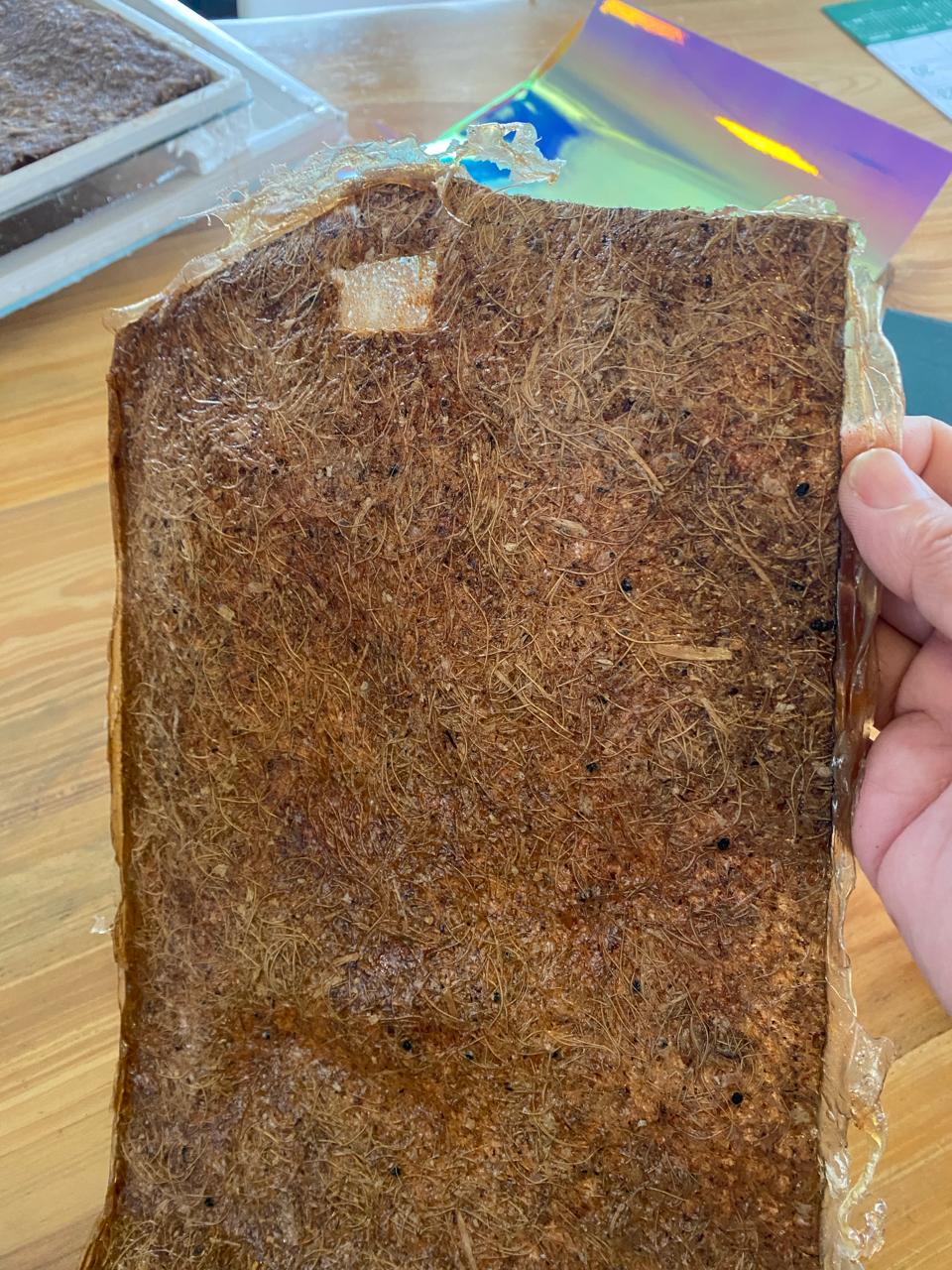
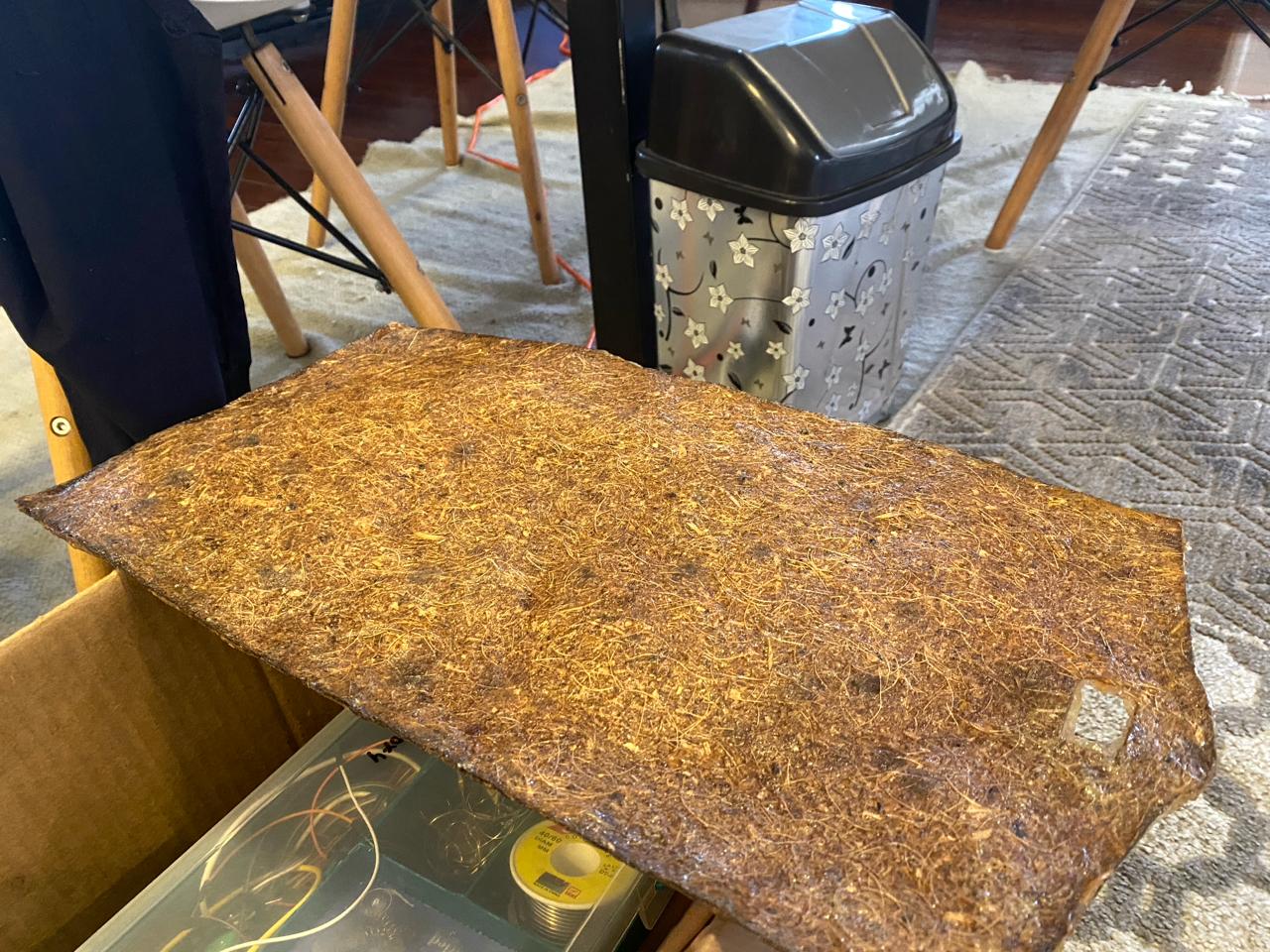
Palulu/ Heliconia Flower Tapioca Leather recipe¶
650 g flower residu 2 l water 50 g tapioca / manioc / cassava starch 100 ml vinegar 30 g salt pinches of cinnamon to avoid molding 5 cloves to avoid molding 10-20g beeswax 100 ml Colorbath from the rubbertree sawndust 30 ml Glycerine
![]()
![]()
Based on earlier advice this time I used the pressure cooker for 10 minutes to process the flower residu from the Heliconia. I added water, salt, vinegar and cloves. After cooling I chopped the flower residu in a food processor. I did not process it with the otheringredients immediately. I left it for 2 days in the fridge. I then proceeded to mix and cook ot together with the other ingredients. I poured it on a glass mold and left it to dry for 4 days.
Outcome: This flower leather is alot smoother than the previous one from Sangrafu/Spiral Ginger. It also did not have so much fungi during the drying process. I wondered why and a 3rd ( which also came out rough) and then 4rd trial (which came out smooth) with the Heliconia flower residu showed me that the key was waiting a few days between blendering the residu mix salt and vinegar and the cooking it with the other ingredients. I essentially pickled it. I suspect it started to ferment which smoothened the final outcome of the material. More testing is needed to find the ideal texture. Adding a small amount of glycerine as a plasticizer also influences the final outcome but that by itself didnt make the 3rd test smooth.
Click on the picture link to see how to Pour Heliconia-Tapioca flower leather in the glassmold.
RED PEPPER LEATHER¶
Peppers used here are the Habanero Chili, a pepper originally from the Amazon.
Background info on Habanero pepper
Recipe: * 200 grams red Habanero peppers * 25 g tapioca / manioc / cassava starch * 20 g vinegar * 5 g salt * pinches of cinnamon to avoid molding * cloves to avoid molding * 10-20g beeswax * 100 ml Colorbath from the rubbertree sawndust * 20 ml Glycerine
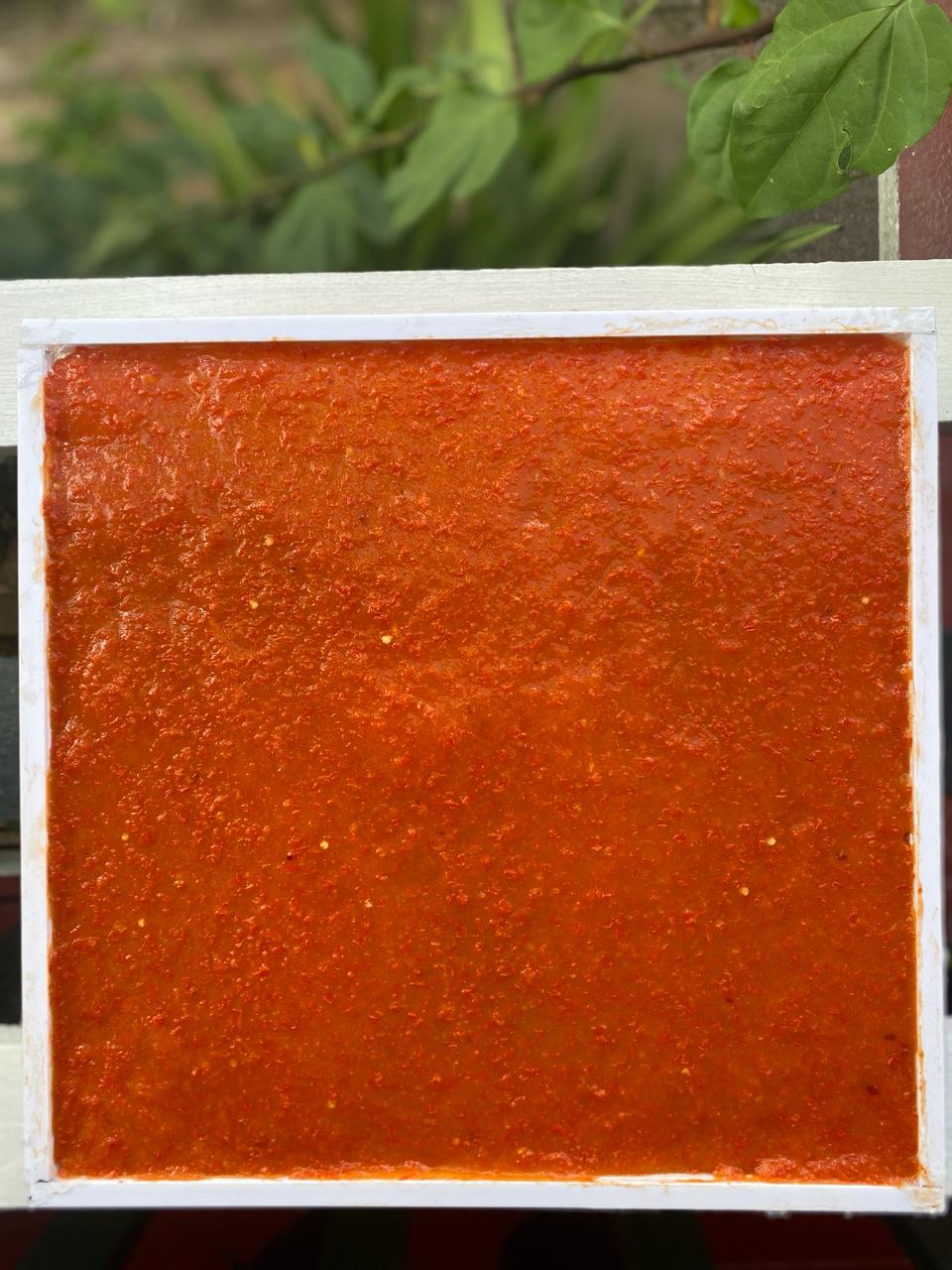

YELLOW PEPPER LEATHER¶
The tutorial for Habanero red peppers also applies to the Yellow Madame Jeanette (Capsicum chinense). This pepper is commonly found in the dishes of Suriname due to it's aroma and flavor. According to online sources this pepper is originally from Suriname.
Wiki on Yellow Madame Jeanet Pepper Paper on pepper variations New Mexico State University The Scoville Scale Madame Jeanette Pepper article
Recipe:
- 200 grams Madame Jeanette yellow peppers
- 25 g tapioca / manioc / cassava starch
- 20 g vinegar
- 5 g salt
- pinches of cinnamon to avoid molding
- cloves to avoid molding
- 10-20g beeswax
- 20 ml Glycerine


BAG AND WALLET DESIGN PROTOTYPES¶
In addition I have now decided which open source model bags to fabricate. I wil change the patterns on the design to match the frog skin but the bags and wallets itself will be based on the following links:
Since this is my first time designing a handbag and wallet, I had to read into it and also find some good designs.
CLASSIFICATION OVERVIEW OF DESIGNER PURSES¶
Here are some overviews or classifications I found on different designer purses:
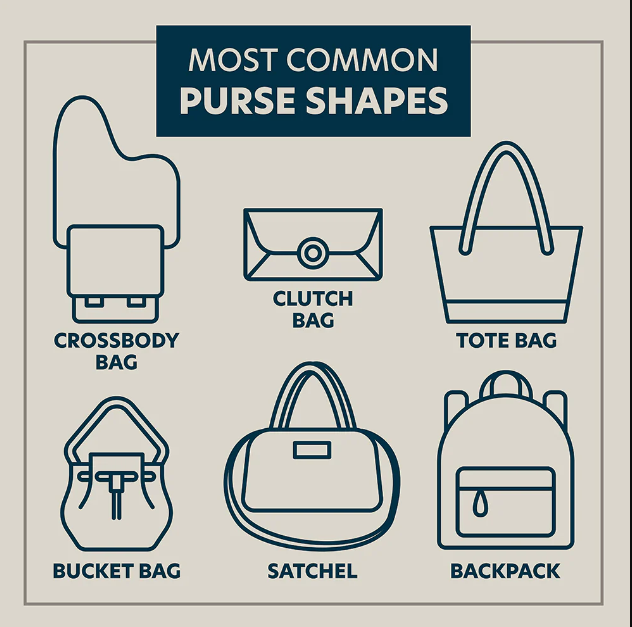
Source: Weaver Leather Supply
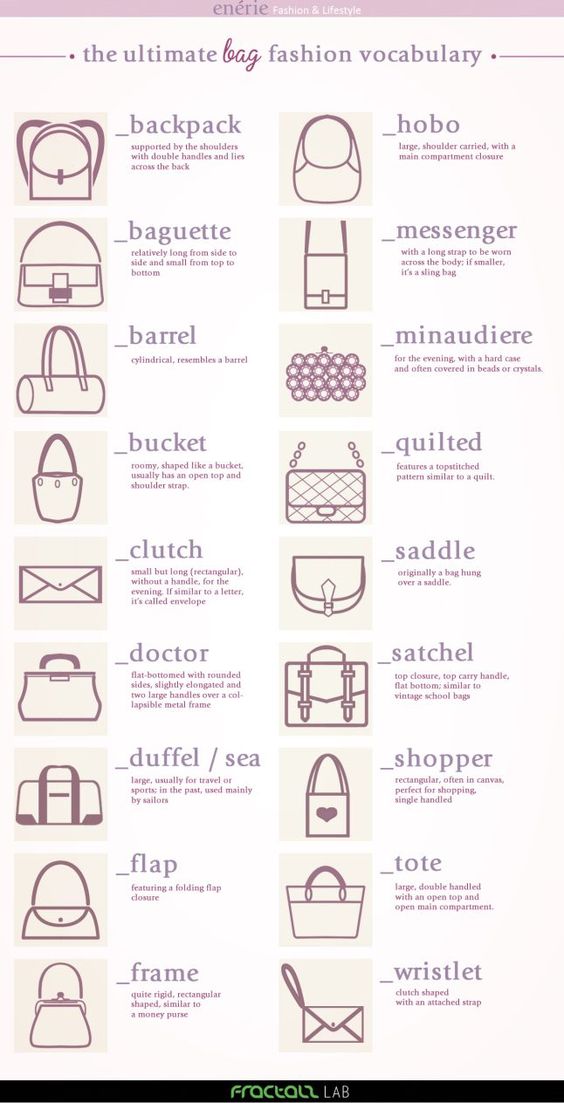
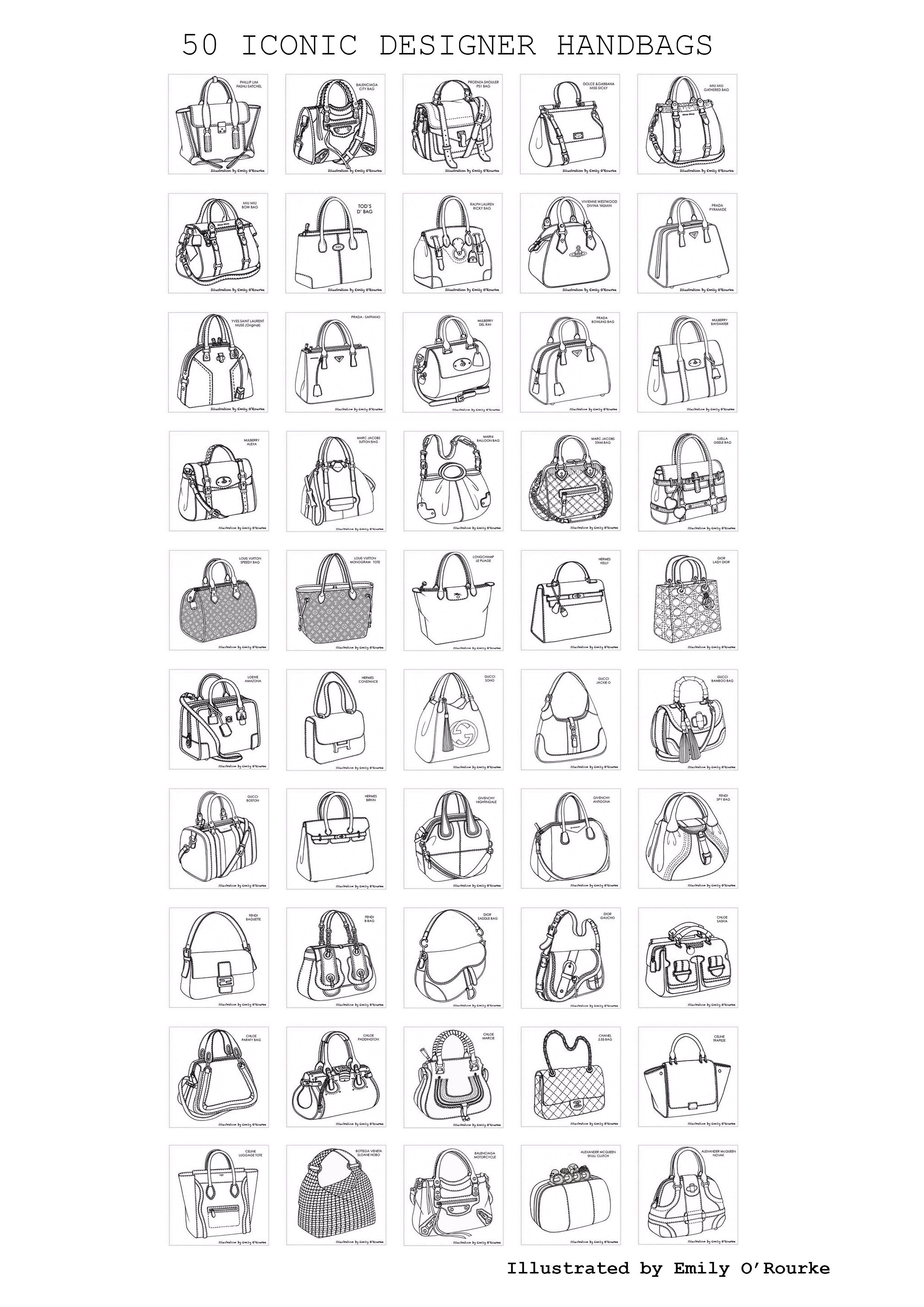
OPEN SOURCE LEARNING PLATFORM WEAVER LEATHER SUPPLIES¶
The designs for the bags and wallets I've chosen are based on open source designs from Weaver Leather Supplies, a US based company with an online platform to get makers started in leather creations.
I've found some patterns on this platform that are both useful,estethic and clean, with very good tutorials on youtube. Finding ready to use patterns in open source has also given me more time to focus on the biomaterials it self as well as the design patterns related to the poison dart frog theme. The leather has to be made ready for lasercutting but after this I added an outerlayer so the design can also function as a preform or mold and I now can immediately pour the bioleather in the form of the end product. I will have to make sure that the material shrinkage is minimal in this case.
I started with two designs:
- The patent leather clutch
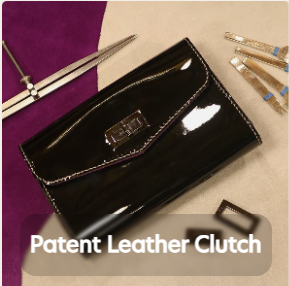
- The travel wallet
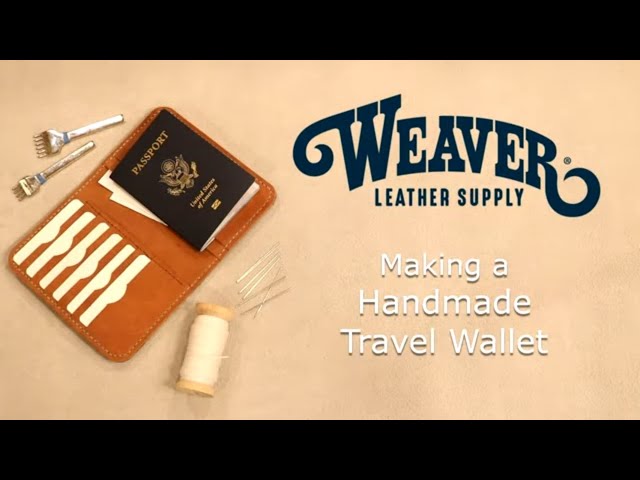
ADJUSTING THE OPEN SOURCE DESIGNS TO MY FROGSKIN BIOMIMICRI COLLECTION¶
Some adjustments made:
- The Bereis clutch: No adjustments made to the design other than preparing it for lasercutting in Lightburn
- The Okopipi clutch: based on feedback I received about the Bereis clutch, I made the Okopipi clutch wider and also added some fabric to the side closings to strengthen these.
- In addition I added lasercut markings of the okopipi frog along the sides.
- I added two leather strips to cover the lasercut markings from the back and create the color effect. Finally I prepared the design for lasercutting in Lightburn.
- The red hot pepper (Rio Madeira) wallet:
- I added circles to the outside in order to mimic the round black spots on the Rio Madeira Frog.
- I added circle cuts inside to the card pockets so I could be laser cut instead of hand cut.
- I added an extra piece of leather in the middle where it folds to strengthen it.
- In addition I also added a button lock on a piece of black leather to close the wallet properly. Finally I prepared the design for lasercutting in Lightburn.
Files for Clutch bag pattern based on Weaver:
Weaver clutch bag original design
Mentoring notes¶
Mentors in all sessions may share with you their comments, notes, advise, projects and technical equipment to check out. This is good place to share those, so that you can find them later on when you need them the most!
Cecilia@reina.raveles
rain forest material calendar > what is over abundant when? those are a first selection of your materials to use rubber tree waste >> is saw dust the only waste? saw dust + iron sulfate = most probably will make black - maybe a good color given your frogs patterns try grasshopper definitions :slightly_smiling_face: https://class.textile-academy.org/tutorials/#grasshopper


